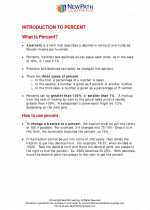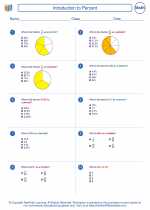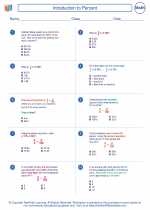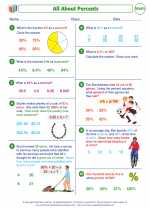Types of Estimation
Rounding
Rounding is a common method of estimation. When we round a number, we change it to the nearest value of a given place value. For example, if we have the number 47 and round it to the nearest ten, we get 50. Rounding makes numbers easier to work with and helps us quickly estimate calculations.
Front-End Estimation
Front-end estimation involves adding or subtracting the leftmost digits of numbers and ignoring the other digits. For example, to estimate 356 + 278, we can add 300 and 200, giving us an estimate of 500.
Compatible Numbers
Compatible numbers are numbers that are easy to work with mentally. For example, when estimating 78 ÷ 6, we can use 80 ÷ 6 to get a quick estimate of 13.
Steps for Estimation
1. Identify the problem
Understand what needs to be estimated. It could be a calculation, a measurement, or a quantity.
2. Choose an estimation method
Decide which method of estimation would be most appropriate for the problem. This could be rounding, front-end estimation, or using compatible numbers.
3. Perform the estimation
Apply the chosen estimation method to make an educated guess of the answer. Remember, the goal is not to find the exact answer, but to get a close approximation quickly.
4. Check the estimate
After estimating, compare the estimated answer to the actual answer if available. This helps in evaluating the accuracy of the estimation and improves estimation skills over time.
Study Guide for Estimation
Practice Rounding
Practice rounding numbers to the nearest ten, hundred, or thousand. This will help in quickly estimating calculations involving large numbers.
Front-End Estimation Exercises
Try front-end estimation exercises to estimate the sum or difference of numbers. This will improve the ability to quickly assess the approximate value of calculations.
Compatible Numbers Practice
Work with compatible numbers to estimate calculations involving division or multiplication. This will aid in developing a sense of which numbers are easy to work with mentally.
Real-Life Estimation
Apply estimation skills in real-life situations such as estimating the cost of items when shopping, estimating distance or time when traveling, or estimating quantities in recipes. This will help reinforce the practical application of estimation in everyday life.
[Estimation] Related Worksheets and Study Guides:
.◂Math Worksheets and Study Guides Seventh Grade. Introduction to Percent

 Worksheet/Answer key
Worksheet/Answer key
 Worksheet/Answer key
Worksheet/Answer key
 Worksheet/Answer key
Worksheet/Answer key
 Worksheet/Answer key
Worksheet/Answer key
